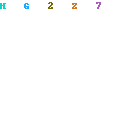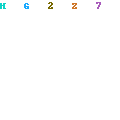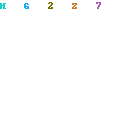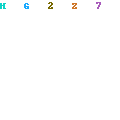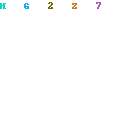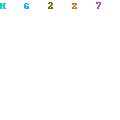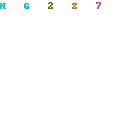 Eat, Drink, and Be Healthy: The Harvard Medical School Guide to Healthy Eating [Paperback]
Eat, Drink, and Be Healthy: The Harvard Medical School Guide to Healthy Eating [Paperback]
List Price:$15.99
Price:$10.87 & eligible for FREE Super Saver Shipping on orders over $25. Details
Editorial Reviews
Amazon.com Review
Aimed at nothing less than totally restructuring the diets of Americans, Eat, Drink, and Be Healthy may well accomplish its goal. Dr. Walter C. Willett gets off to a roaring start by totally dismantling one of the largest icons in health today: the USDA Food Pyramid that we all learn in elementary school. He blames many of the pyramid's recommendations--6 to 11 servings of carbohydrates, all fats used sparingly--for much of the current wave of obesity. At first this may read differently than any diet book, but Willett also makes a crucial, rarely mentioned point about this icon: "The thing to keep in mind about the USDA Pyramid is that it comes from the Department of Agriculture, the agency responsible for promoting American agriculture, not from the agencies established to monitor and protect our health." It's no wonder that dairy products and American-grown grains such as wheat and corn figure so prominently in the USDA's recommendations.
Willett's own simple pyramid has several benefits over the traditional format. His information is up-to-date, and you won't find recommendations that come from special-interest groups. His ideas are nothing radical--if we eat more vegetables and complex carbohydrates (no, potatoes arenot complex), emphasize healthy fats, and enjoy small amounts of a tremendous variety of food, we will be healthier. You'll find some surprises as well, such as doubts about the overall benefits of soy (unless you're willing to eat a pound and a half of tofu a day), and that nuts, with their "good" fat content, are a terrific snack. Relying on research rather than anecdotes, this is a solidly written nutritional guide that will show you the real story behind how food is digested, from the glycemic index for carbs to the wisdom of adding a multivitamin to your diet. Willett combines research with matter-of-fact language and a no-nonsense tone that turns academic studies into easily understandable suggestions for living. --Jill Lightner --This text refers to an out of print or unavailable edition of this title.
From The New England Journal of Medicine
There is an interesting dilemma for those who would influence nutrition. In many places in the world, there are governmental agencies concerned with food security, food safety, agriculture, health, and trade that may, from time to time, implement policies that are at least intended to reduce the risk of chronic diseases. Most often, when the goals of agriculture and human health clash, it is the will of the agriculture sector that prevails (remember the European Union's ``butter mountain'' and ``wine lake''?). In the United States, perhaps more than anywhere else, this has left an opening for self-help nutrition books. In a land where individuality and self-reliance are valued above many other virtues and where disease is sometimes seen to be a mark of personal failure, gaining access to the best data on health-related food consumption may be central to maintaining control over one's health. The quality of such books varies enormously, from the bizarre to the mundane. The feature they share is the promise of better health and control over one's destiny. Only occasionally do bona fide researchers step into the maelstrom. Enter Walter Willett of Harvard University and Eat, Drink, and Be Healthy.
Willett's book is based on evidence derived almost exclusively from large cohort studies of diet and disease. He has been the architect of several such studies and is a major contributor to what we know about methods of collecting and analyzing data; he formerly served the Journal well in this capacity. His position in this regard is preeminent but not unchallenged. He encapsulates his position on the evidence in a new ``Healthy Eating Pyramid,'' a gauntlet thrown at the feet of the U.S. Department of Agriculture (USDA). He notes that the USDA Food Guide Pyramid, like Rudyard Kipling's elephant's child, got pulled into shape by competing interests, few of which cared about human health. He goes on, ``You deserve more accurate, less biased, and more helpful information than that found in the USDA Pyramid.'' Thus, the book brings us the promise of science in the service of nutrition, and as with any good scientific claims, Willett makes sure we know, up front, that all findings are provisional and all recommendations subject to change.
The central chapters of the book are derived from and explicate the layers of the new pyramid. Central to Willett's recommendations is the control of body weight, in which exercise, rather than caloric restriction, has the primary role. However, there is also helpful and practical advice on defensive eating strategies; for example, Willett states, ``Recognize that we are victims of our culture, one that glorifies excess.''
Indeed, much of what is presented in the book is sensible and practical and demystified. For example, the data and associated recommendations on fluid intake include the following: we should drink water; tap water is OK; soft drinks are full of empty calories; and fruit juice contains more beneficial substances and less sugar than soft drinks but cannot simply be substituted for water, because, of course, it does contain calories. There is also useful information on more arcane subjects: for instance, we should be careful of grapefruit juice because it modifies the absorption and metabolism of a variety of drugs in ways that may be detrimental. And there is a proper assessment of coffee drinking that I like to summarize as follows: If drinking moderate amounts of coffee is your worst nutritional vice, you are in excellent shape. Even in the area of alcohol, Willett, who has been and remains a champion of the beneficial effects of moderate consumption (which he has the courage to define), notes that if you do not drink alcohol you should not ``feel compelled'' to start. Possibly, this is a nice antidote to the widely held notion that if some is good, more is better, but his choice of words is just a little disturbing. Finally, although many self-help books with much poorer pedigrees than this one offer recipes, it is not often that they include useful rules of thumb about shopping and places to shop and even practical tips on how to make substitutions in recipes.
Are there areas where Willett's Healthy Eating Pyramid and the associated information may not be warmly embraced by others in the nutrition-and-disease research community? Certainly the switch from vilifying total fat (a position Willett abandoned early) to asserting that carbohydrate is the bad guy (a position that Willett has made his own) and that there are ``good fats'' and ``bad fats'' does not meet everybody's sniff test. The field of nutrition and chronic disease is populated by those who will agree with Willett on none, one, two, or all three of these positions. It is probably fair to say that reality is not as clear as this book suggests. It is quite clear that diets high in potatoes, olive oil, or even sugar are not harmful to all (or beneficial to all). It seems probable that in the future there will be increasingly clearer advice that is based on metabolic variations -- variations in body shape and fat distribution and subtle genetic differences in the capacity to handle major nutrients -- and that echoes what we already know about micronutrients. It may well be that the ability to handle specific foods and nutrients differs substantially from person to person and that the only universal may prove to be Willett's central tenet: match the energy ingested to the energy expended by controlling both eating and exercise.
It is an interesting paradox that doctors, scientists, and engineers are highly regarded in Western societies but that only a minority of people in those societies like reading about science or are even interested in the topic. Couple that with data from Robin Dunbar of the University of Liverpool in Britain, who found that perhaps two thirds of all human speech is gossip, and it will not be surprising if Willett's book (perhaps like those by Stephen Hawking) sells well but has no impact at all on human behavior or even understanding.
John D. Potter, M.D., Ph.D.
Copyright © 2002 Massachusetts Medical Society. All rights reserved. The New England Journal of Medicine is a registered trademark of the MMS. --This text refers to an out of print or unavailable edition of this title.
Product Details
- Paperback: 352 pages
- Publisher: Free Press; 1 edition (June 28, 2005)
- Language: English
- ISBN-10: 0743266420
- ISBN-13: 978-0743266420
269 of 281 people found the following review helpful:
5.0 out of 5 stars The Latest Research, Good Explanations, and Easy to Use,July 11, 2001
By
Professor Donald Mitchell "Jesus Loves You!" (Thanks for Providing My Reviews over 107,000 Helpful Votes Globally) - See all my reviews
(TOP 10 REVIEWER) (VINE VOICE)
This review is from: Eat, Drink, and Be Healthy: The Harvard Medical School Guide to Healthy Eating (Hardcover)
Review Summary: You would have a hard time finding someone in a better position to write this book. Dr. Willett is chairman of the Department of Nutrition at the Harvard School of Public Health, a professor at Harvard Medical School, and he heads some of the most important long-term studies of how nutrition affects health. In this up-to-date book, you will learn what the latest research shows about how eating, alcohol use, exercise and not smoking can help you avoid some diseases and birth defects. The book also explains how to read the latest health headlines and interpret the studies they are based on in the future. The lessons are summarized into a Healthy Eating Pyramid that you will find easy to understand, apply, and remember. The book contains a lot of helpful information about how to shop for more nutritious and healthful foods, and easy-to-follow recipes. I was particularly impressed with the summaries of the data on how weight and eating relate to various diseases. The book's only obvious flaw is that it does not attempt to refine the overall research into subsegment groups like those with different blood types, different genetic tendencies, age levels, and so forth.
Review: Like Sugar Busters! this book takes a serious look at overcoming the tendency for having too many fast-absorbed carbohydrates (whether as baked potatoes or as a soft drink) overload your blood with sugars and depress your metabolism. Unlike the "avoid fat at any cost" diets, this one says to avoid bad fats (especially trans fat and saturated fats) and to use helpful fats (like unsaturated fats that are liquid at room temperature). You are also encouraged to seek out nuts as a source of vegetable protein. There is also a good discussion of the healthiest ways to acquire your protein. The beef v. chicken v. fish discussion is especially helpful. He is skeptical about the need for much in the way of dairy products (I was shocked to realize how much glycemic loading, creating sugar in your blood, is caused by skim milk), but favors vitamin supplements as inexpensive insurance. He shows that calcium supplements may not do as much as you think to avoid fractures. Exercise and not smoking are encouraged. Raw foods and ones that are slow to digest (whole wheat, for example) are encouraged among the fruit and vegatables, in particular.
The pyramid is contrasted to the one that the USDA adopted in 1992, which seems to be almost totally wrong. Apparently, it was developed based on a very limited research base. Since then, much has been learned.
I enjoyed reading about all of the long-term studies being done now to understand the connections among eating, lifestyle, and health. The next 10 years should radically revise the lessons summarized here, as Dr. Willett is quick to point out. The conclusions in this book, for example, are based on individual studies of eating, drinking, exercise and health rather than the long-term studies that he supervises and follows. So even those studies may show new things.
In one part of the book, he discusses the pros and cons of some of the popular diets. Some simply have not been tested for health effects, and he is candid in sharing what is not known as well as what is.
This book will be especially valuable to those who like to get their information from highly credible sources, especially from within the medical community. I think I'll give a copy to my physician, who has been advising me to reduce fats in the wrong way!
Although I don't consider myself very helpful in shopping for or preparing food, I learned a lot from the book about how our family can acquire better building blocks for a healthier diet. After you finish reading this book, think about where else in your life you may be following outdated information. How can you check? A good example is probably related to what you think it costs parents for children to go to graduate school and get a Ph.D. In many schools, all the costs are subsidized, and the students even get a living wage. How does that change your plans for encouraging your children's education?
At Last, a Reliable Book on Healthy Eating, July 11, 2005
By George Webster, Ph.D., (Orlando, FL USA) -
This review is from: Eat, Drink, and Be Healthy: The Harvard Medical School Guide to Healthy Eating (Paperback)
This book is a breath of fresh air among a noxious swarm of books that claim to know how we must eat in order to be healthy. They recommend a bewildering variety of diets, megadoses of vitamins and minerals, herbs, extracts, and heaven knows what else, all guaranteed to make us healthy. Some even peddle the nonsense that they can stop, or even reverse, aging.
In contrast, Walter Willett's book is based on solid science, obtained by careful research involving, in some cases, more that 100,000 persons. There is no intuition here. The recommendations are based on facts. And mighty interesting facts they are. We see that the famous, heavy-on-carbohydrate USDA food pyramid has little evidence to support its role in health. Instead, it appears to support the income of the food industry. He presents his own pyramid, based on daily exercise and weight control. Sitting on this base are whole grain foods, vegetable oils, fruits, vagetables, nuts, legumes, fish, poultry, and eggs. At the top of his pyramid are small amounts of dairy products, and even smaller portions of red meat and carbohydrate. He presents evidence to support his pyramid, and the result is impressive. He leads us through things that we should know about fats, carbohydrates, proteins, fruits, vegetables, and whole grains. We even get recipes. For me, a biochemist, the book's strong point is its lack of the unsustantiated claims that I see in so many of the popular books on nutrition. Walter Willett is one the persons best qualified to write an outstanding book on this subject, and the result is excellent.
